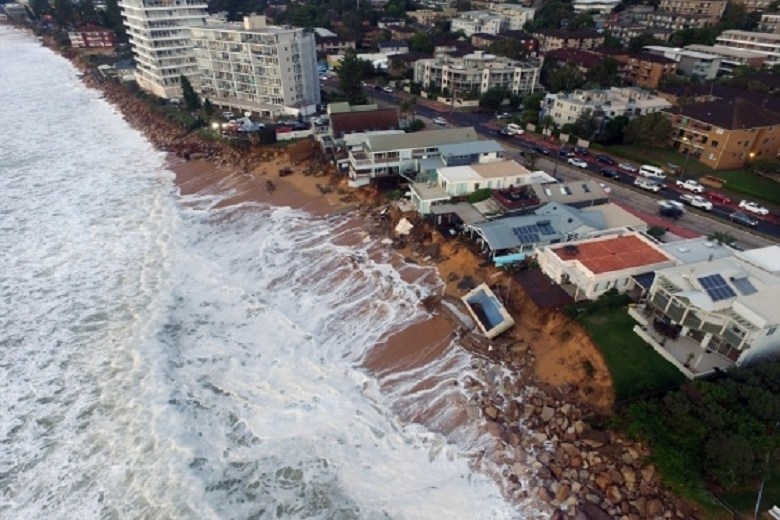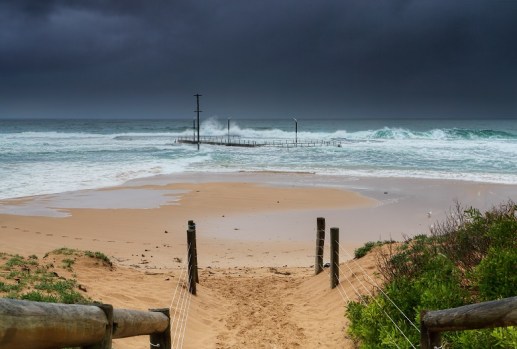
Local councils need to engage more with their communities to raise awareness about the hazards, risks and management implications of future sea level rise, University of NSW experts say.
The warning comes after researchers found that half of the people who live, work or play on the NSW coast do not think sea level rise will impact their lives.

Their report – released on the third anniversary of the East Coast Low ‘superstorm’ that left Collaroy mansions on the brink of collapse – describes what the NSW community understands about coastal erosion and inundation, as well as sea level rise and severe coastal storms.
The report shows that while 85 per cent of coastal users believe the sea is rising, 50 per cent do not think it will affect them.
The researchers say this is concerning because people’s understanding and perception of storms and sea level rise can significantly influence whether they engage in coastal adaptation actions – often influencing the success or failure of those actions.
Waterfront complacency
Professor Rob Brander, a coastal geomorphologist at UNSW, said unless people actually live on the waterfront, either on a beach or estuary, they tend to be fairly complacent about sea level rise issues in general.
“Even those who do live on the waterfront can be complacent as sea level rise is a gradual process,” Prof Brander told Government News.
“It’s hard to see the impacts, if any, of sea level rise at the moment.”
Mr Brander said the implications of this complacency at a local level is that more people will continue to live adjacent to ocean waterfronts and when sea level does become an issue, they will likely seek answers and solutions from local government councils.
“So the issue of ‘blame’ is a big implication resulting from complacency.”
At the state level, there are 15 erosion ‘hotspots’ throughout NSW at the moment. If sea level rises, the number of hotspots will likely grow, he said.
“Complacency will only help contribute to that number by people continuing to live in at-risk areas.
“The overall impacts of complacency are increased blame and anger towards the governments who ‘should have done more’. It’s very much a Catch 22 situation for governments who are aware of the risk of sea level rise but are dealing with residents living in dwellings that were established many years ago.”
More community engagement needed
Prof Brander said local councils need to engage more with their communities.
“They already do, but the challenge is finding the most effective way deliver this information to the community and second, how to motivate the community to be interested in this information.
“Our study showed that local communities want to be educated more by documentary style government education and want to know more about who the key players are in coastal management and who makes decisions that will impact them.
“This was more of a concern than learning more about climate change and sea level rise. In fact, most of our surveyed respondents had good knowledge of sea level rise rates.”
Rising sea levels will impact everyone
The state government-funded MyCoast NSW study, involving 1000 respondents, also surveyed coastal accommodation businesses.
It found 25 per cent didn’t think or were unsure whether the sea level was rising and 38 per cent didn’t think it would impact them.
“That’s a worry, given that estimates suggest that by 2100, sea level rise could increase by a metre or more if greenhouse gas emissions continue unchanged,” co-author Anna Attard said.
She said sea level rise will affect everybody.
“Rising sea levels mean far-reaching impacts on people’s transport, infrastructure, sewerage and water, to name just a few examples,” Ms Attard says.
Comment below to have your say on this story.
If you have a news story or tip-off, get in touch at editorial@governmentnews.com.au.
Sign up to the Government News newsletter.
